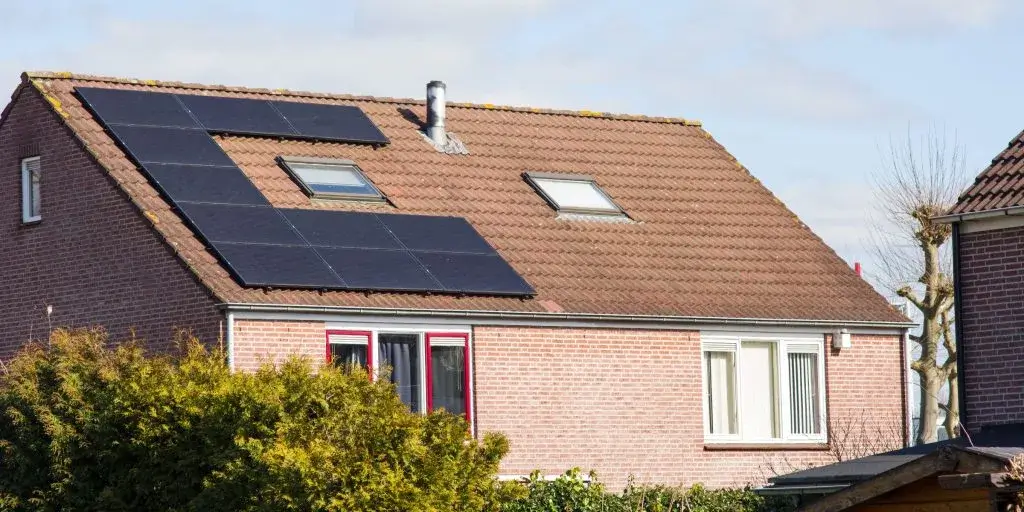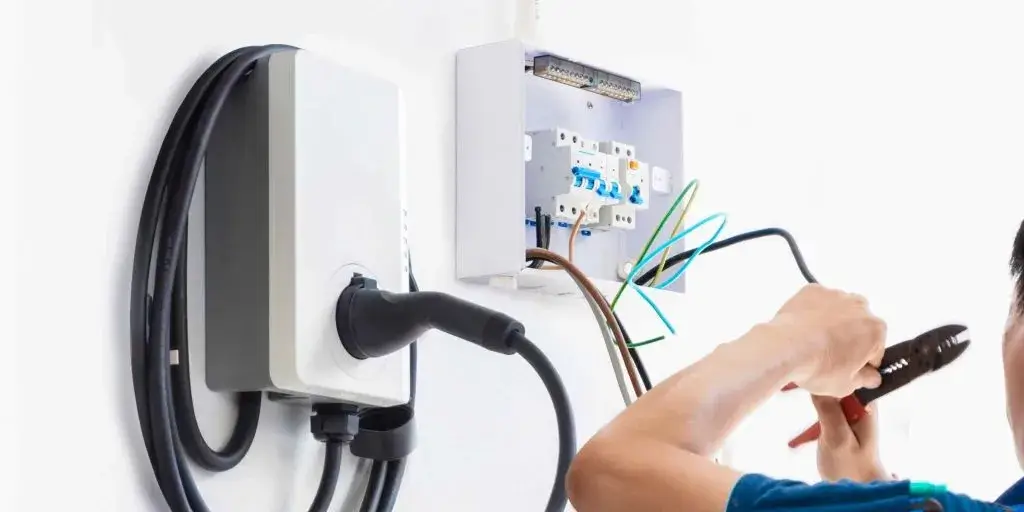When you picture solar panels, chances are you think of them as either sleek black or deep blue.
For years, these two colours have been the face of solar energy. But now that solar technology is moving forward and more homeowners are looking for panels that match their home’s style — it’s only natural to ask: Are black and blue the only options in solar panels?
Let’s explore this colourful world of modern solar panels and see what choices are out there for you today.
Why Are Solar Panels Traditionally Black or Blue?
Before we get into the exciting new colours, it helps to know why solar panels have mostly been black or blue until now.
Black Solar Panels – Monocrystalline Silicon
Black solar panels are made from monocrystalline silicon, one of the purest forms of silicon used in solar technology.

Because of their high purity, these panels are very good at absorbing sunlight, making them more efficient at turning sunlight into electricity.
The deep black colour comes from the way the silicon crystals are arranged so they absorb more light and reflect less, giving a smart, uniform look.
They often blend in nicely with modern roofs, which is why they’re a favourite for homeowners wanting a sleek, low-profile solar system.
Even though the shade of black might vary slightly depending on the brand, the overall effect is stylish and modern — perfect if you want your solar panels to look as good as they perform.
Blue Solar Panels – Polycrystalline Silicon
Blue solar panels are made using a slightly different method.They use polycrystalline silicon, where many fragments of silicon crystals are melted together.
This process is cheaper but creates panels that are a bit less efficient than the monocrystalline ones.
The blue colour comes from the way light reflects off the different crystals inside the panel. Some people love the shimmering, speckled look of blue panels, but they can sometimes stand out more, especially on homes with lighter or more traditional roofing materials.

In short:
- Black panels = more efficient and modern looking.
- Blue panels = more affordable, but sometimes a bit more noticeable on the roof.
Don’t Forget About the Frames!
It’s not just the solar cells themselves that matter — the frame around them plays a big role in how the panels look on your roof.
Most panels have silver frames, which are cheaper to produce. However, many homeowners now prefer black frames, especially when matched with black panels, as they create a more smooth and polished look.
If you care about your solar system blending into your roof, it’s worth asking your installer about frame options too!
A Look at Coloured Solar Panels
Thanks to new innovations, solar panels aren’t stuck in the black-and-blue world anymore.
There are now many more colour options to choose from, if you’re looking for something a little different.
How Are Coloured Solar Panels Made?
Coloured panels are created by adding special coatings or surface treatments that reflect certain wavelengths of light. This is what creates the visible colour on the panel.
However, there’s a catch:
Adding these coatings can reduce the panel’s efficiency by up to 45%, meaning they produce less electricity from the same amount of sunlight.
To tackle this, scientists and engineers are experimenting with newer methods like soft-print lithography, which could make coloured solar panels more efficient in the future.
Why Do Homeowners Love the Idea of Coloured Panels?
For many people, having a solar system that looks good on their home is just as important as saving on energy bills.
There’s growing interest in:
- Green panels, which blend beautifully with homes surrounded by trees or countryside.
- Transparent panels, designed to be almost invisible when installed, keeping the roof’s natural look.
- Custom-coloured panels, perfect for matching specific roof tiles or architectural styles.
Another exciting development is building-integrated photovoltaics (BIPV). This is where solar cells are built directly into roofing materials like tiles, slates, or even glass windows giving you full control over the appearance of your solar-powered home.
Can You Get Coloured Solar Panels Today?
Yes, you absolutely can!
Manufacturers today offer panels in a variety of colours such as:
- Orange
- Red
- Purple
- Green
However, before getting too excited, it’s important to know:
- They’re more expensive — coloured panels cost more to make and install.
- They’re slightly less efficient — because the coatings interfere with sunlight absorption.
For these reasons, many solar companies still recommend sticking to black monocrystalline panels, which offer the best balance of performance, price, and looks for most homeowners.
Conclusion
So, back to the big question: Are black and blue the only options in solar panels? The answer is no — not anymore! There are now many more colours available, giving homeowners much more choice than ever before.
That said, black and blue panels are still the most popular because they provide the best combination of efficiency, affordability, and long-term reliability.
If your main goal is to get the most energy out of your system and the best value for your investment, we recommend sticking with trusted monocrystalline or polycrystalline panels. But if you’re willing to pay a little extra and don’t mind slightly lower performance for the sake of style, then coloured panels could definitely be an exciting option for you.
Looking for Solar Solutions?
At My Power, we’re here to make solar simple. Our friendly team will help you find the perfect solar solution based on your home, your needs, and your style — without any confusing jargon or pushy sales talk.
Ready to power your home with solar?
Visit My Power today and let’s get you started on your journey to cleaner, greener energy!
Frequently Asked Questions
1. Are coloured solar panels less efficient than traditional black or blue ones?
Yes, coloured solar panels tend to be less efficient. The special coatings or treatments used to create the colour can reduce their ability to absorb sunlight, meaning they may produce less electricity. However, new technologies are being developed to improve the efficiency of coloured panels.
2. Can I get solar panels in any colour I want?
While there are now more colour options available, most coloured solar panels come in shades like green, red, orange, and purple. Some manufacturers are working on custom colours, but it’s important to keep in mind that these panels may be more expensive and slightly less efficient than traditional black or blue panels.
3. Why are solar panels usually black or blue in the first place?
Black and blue are the most common colours because they are made from two types of silicon: monocrystalline (black) and polycrystalline (blue). These materials are efficient at absorbing sunlight, which makes them the most effective options for converting solar energy into electricity.
4. Do the frames of solar panels affect their appearance?
Yes, the frame around the solar panel can influence its look. Silver frames are common but can be more noticeable. Many homeowners prefer black frames to match with black monocrystalline panels for a sleeker, more streamlined appearance.
5. Are coloured solar panels more expensive?
Yes, coloured solar panels are generally more expensive. The special coatings or treatments used to create the colour cost more to produce and install. However, some homeowners are willing to pay a premium for a more aesthetically pleasing solar system.
6. Can coloured solar panels be used on any type of roof?
Coloured solar panels can be installed on most types of roofs, but it’s important to consider the roof’s style and materials. Coloured panels may be a better choice for homes with specific architectural styles or if you want the panels to blend smoothly with your roof design.





